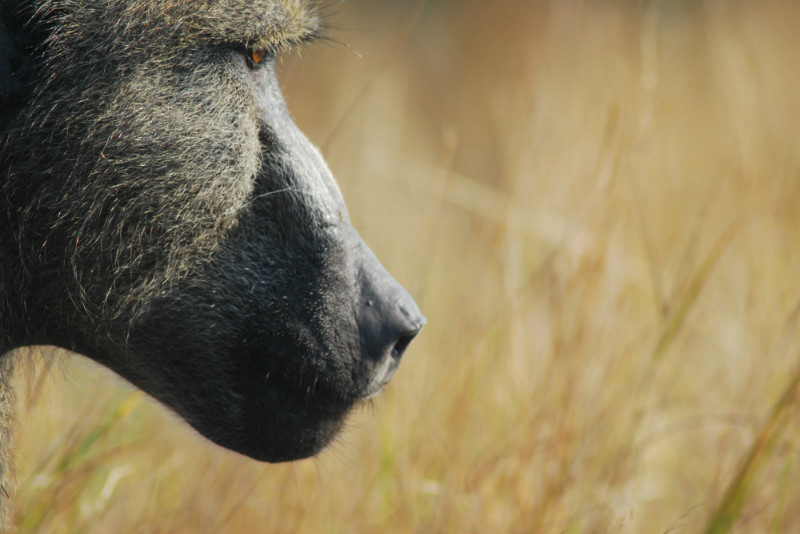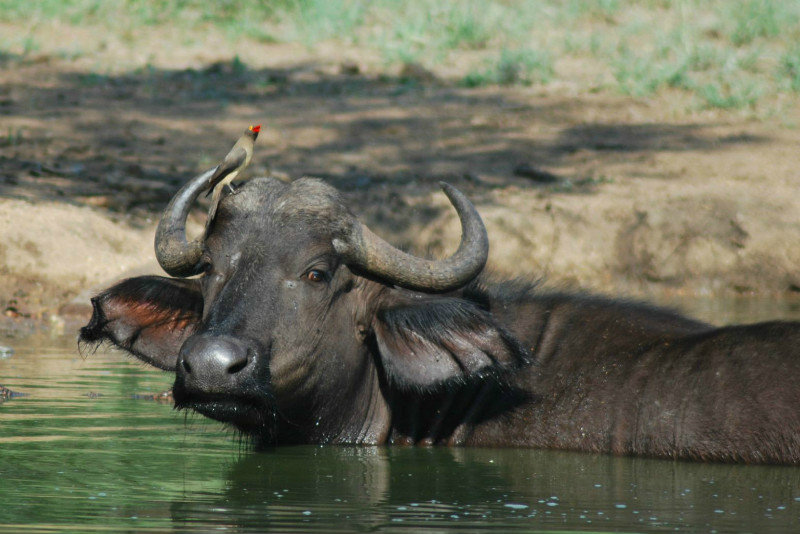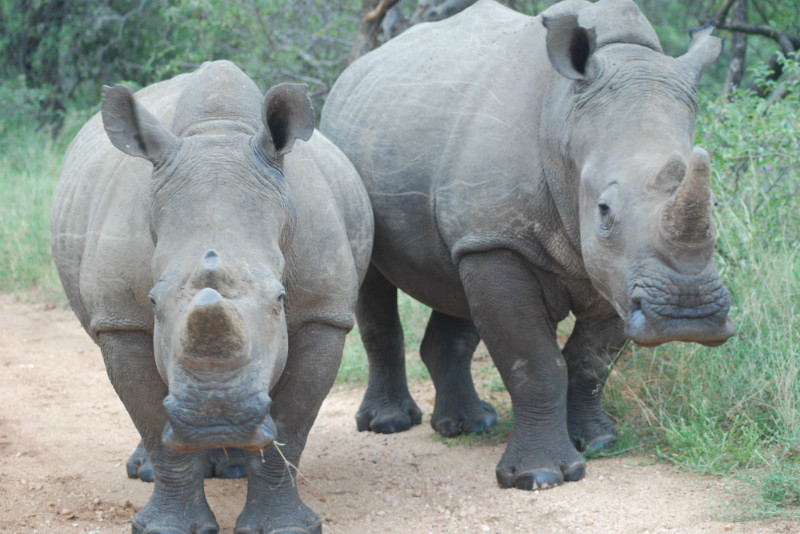During my year training and working as a safari guide I had little time to do anything other than study. However, when I didn’t have my head in the books I’d either go running or take the camera out. Here are a few I captured along the way along with some fascinating facts on each animal.
Close up of a Chacma baboon walking along the road in Kruger National Park. The photo illustrates the point perfectly that the species name, cynocephalus, means “dog-headed”.

A flap-necked chameleon in the trails camp at Makuleke, Kruger National Park. Chameleons are able to change their colour due to nerves that are stimulated by what they see. This causes pigments called melanophores to darken the skin and at the same time obscures the bright yellow and red pigments known as chromotophores.

One of my fellow students, Duncan, took this shot of a cheetah at Karongwe Private Game Reserve. We spent a couple of hours watching a mother and three cubs. On the photograph you can see the remnants of grey hair down its back. Cubs up to the age of twelve weeks sport a line of grey hair down their backs. It is thought that this is to mimic the coloration of the feared honey badger. However, this is still to be proven.
During a previous visit to South Africa I volunteered at Siyafunda on the Makalali Game Reserve. They had a seperate enclosure where they kept their disease free buffalo, this was to protect these expensive aninals from the lions. Even in their own enclosure it still took us time to find them. We eventually located them wallowing in a small dam. TB is the main threat to buffal nowadays but in the past it was Rinderpest. This disease in the 1890s which almost wiped out the buffalo, estimates say that for every buffalo that lived, 10,000 died.

I was able to catch a glimpse of a common duiker thanks to my camera trap which I had set up behind camp whilst living on the Makuleke concession in Kruger National Park. It’s not easy seeing them on foot or in the vehicle as they will quickly dart off. They run with a distinctive darting and diving style when they flee danger. This gives rise to its common name which is the Afrikaans for “diver”.

Given the current state of rhino poaching in Africa I was so lucky to see them during my stay in Africa. Here’s a pair of white rhino that I saw on a visit to a private game reserve. It is thought that the white rhino is so named because English speaking settlers misinterpreted the Dutch name of the animal. They thought people meant “white” when they were actually saying “wiyd” in reference to the wide mouth of the animal.

Get involved
Interested in doing a safari course yourself? Then visit the Courses and Events page where there are many to choose from. Courses range in length from one week to the eleven month professional safari guide course which James completed. To take a look at what he experienced the story of his year out starts here.


 Previous Post
Previous Post
